|
Resonance Theory The Unification of Relativity and Quantum Physics Through the Electromagnetic and Mass Properties of Empty Space
A Special Supplement by Mark Anderson
Supporting Documents 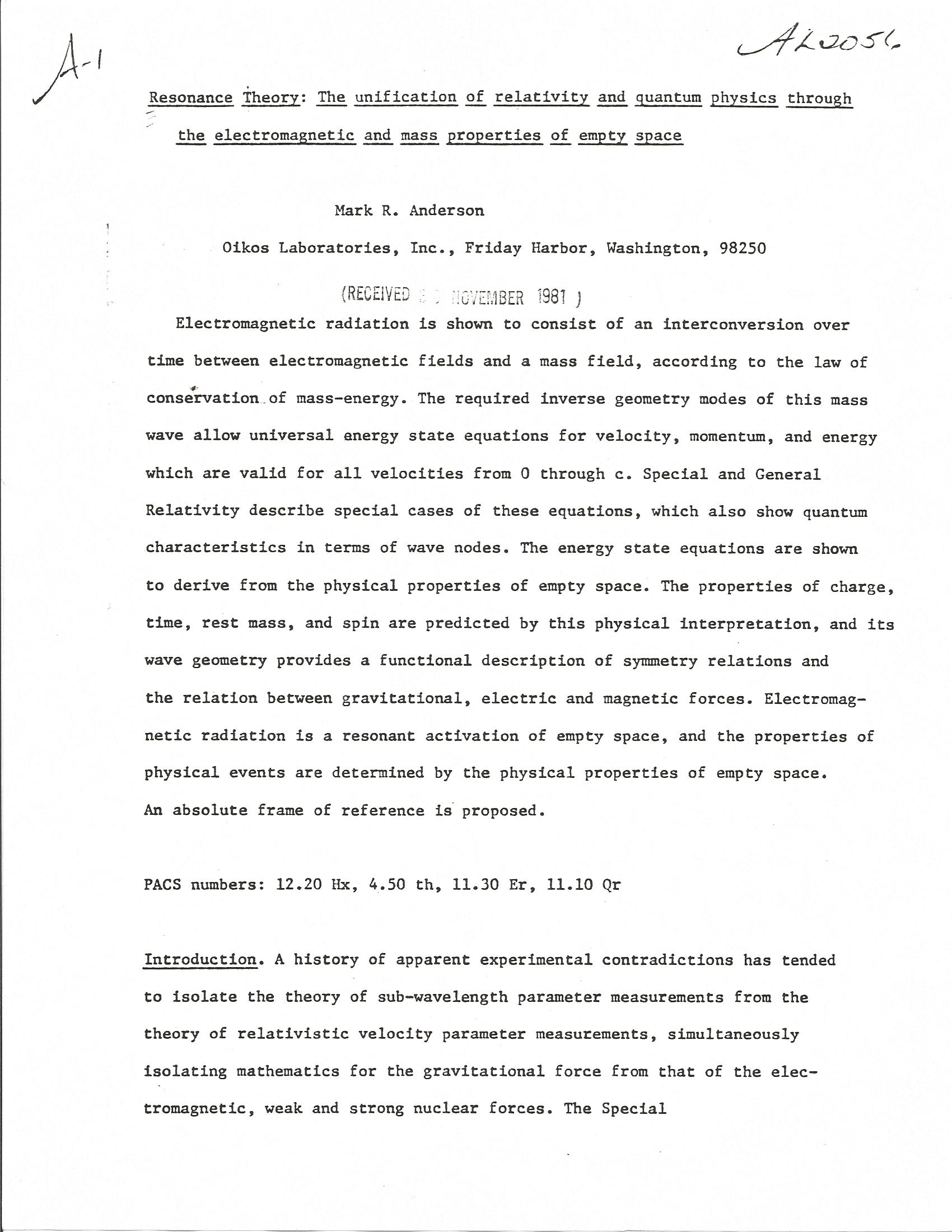 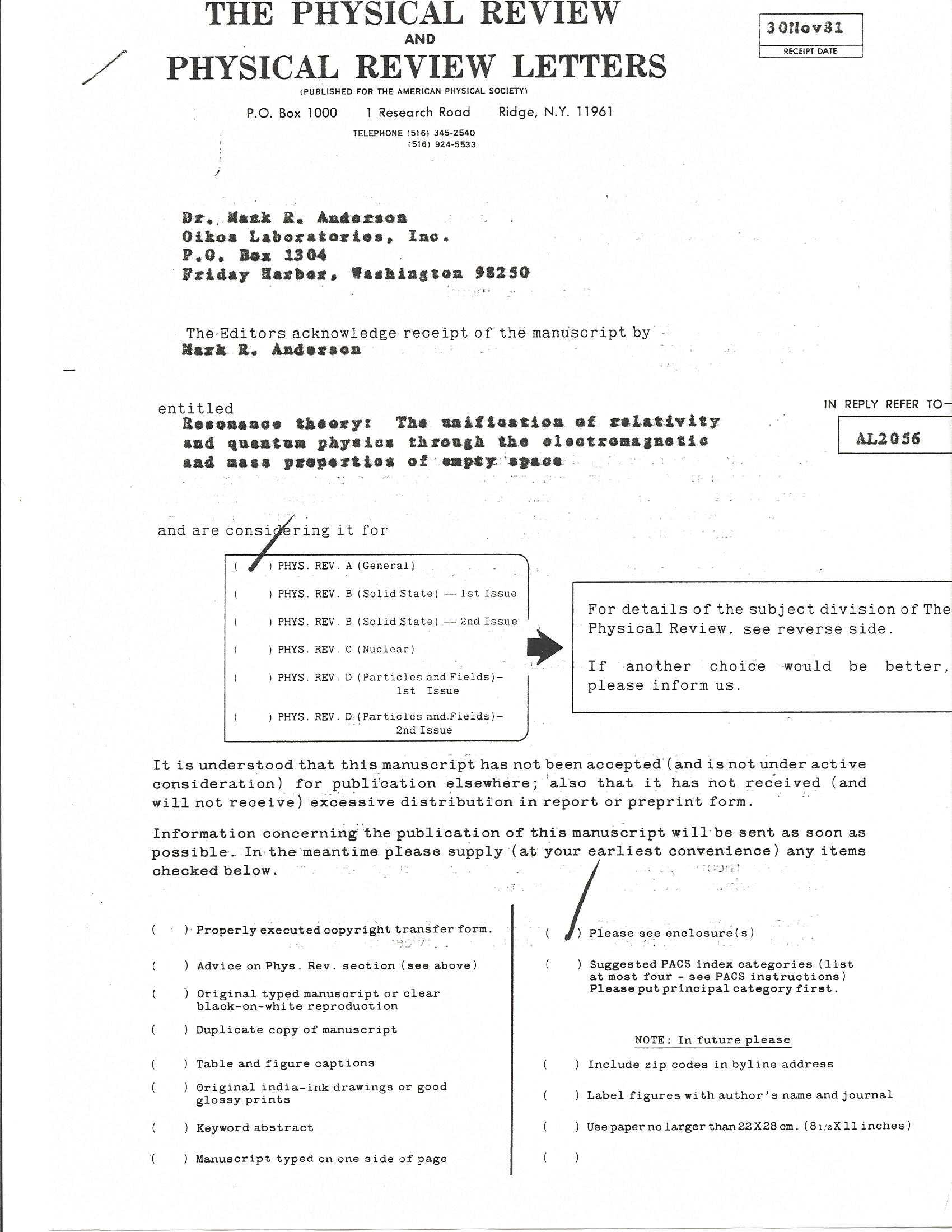 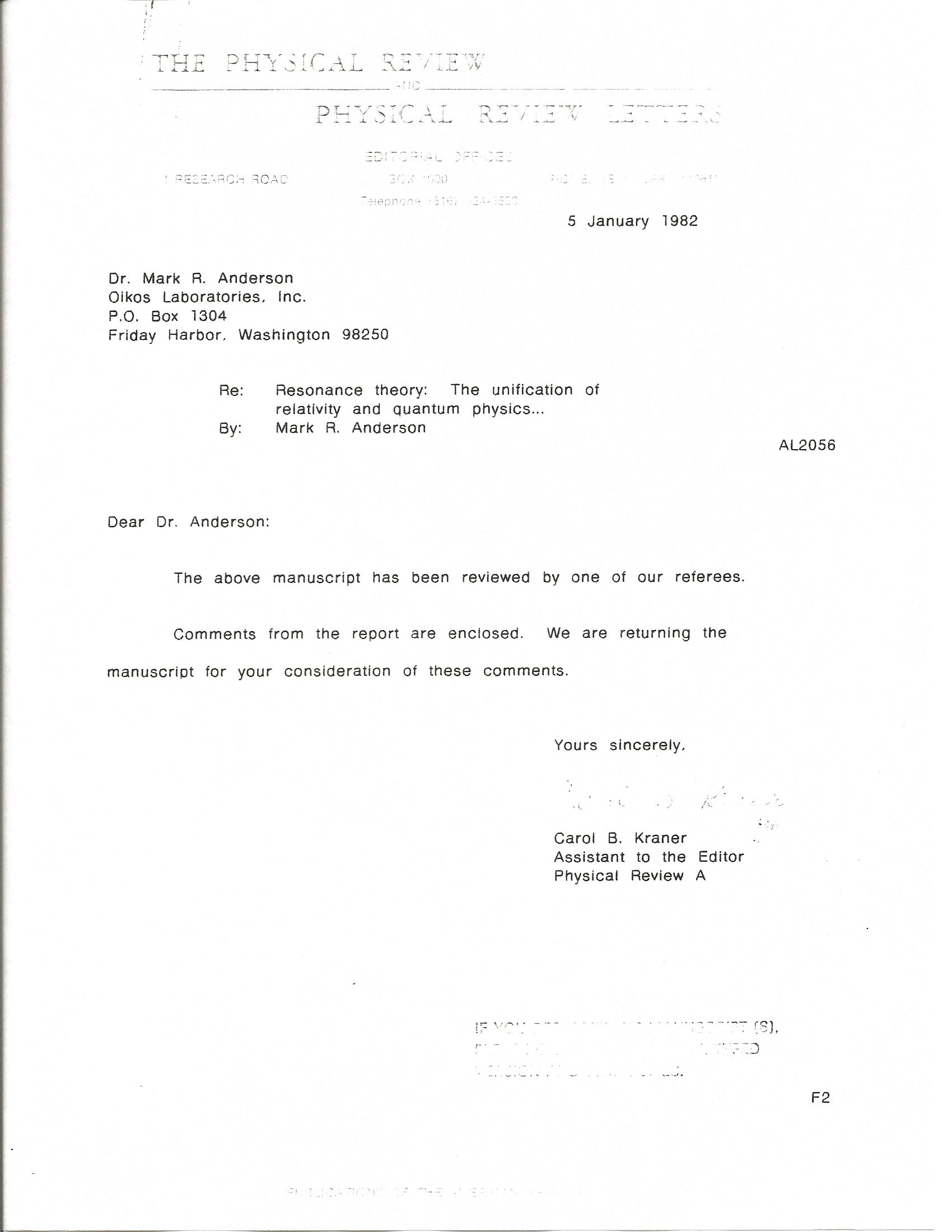 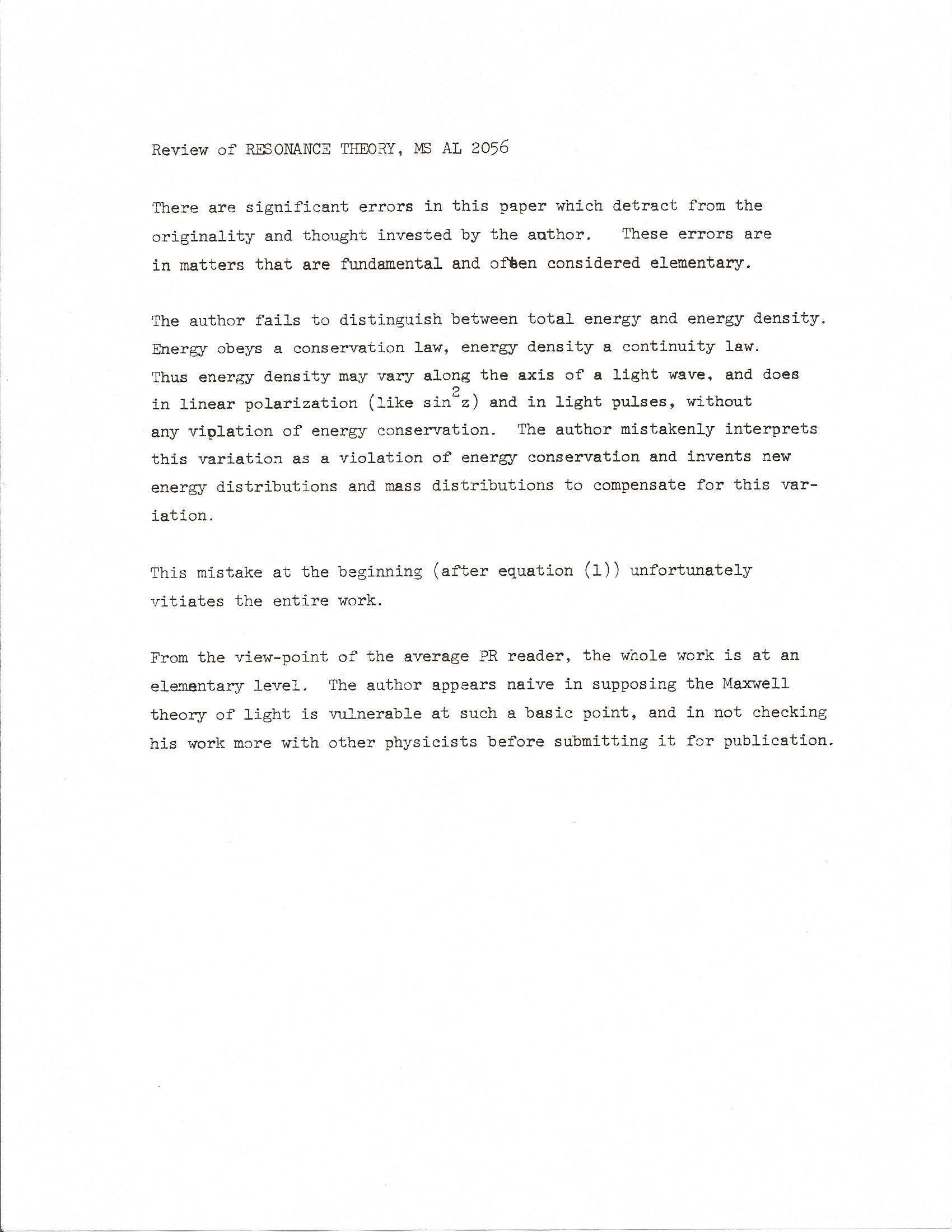 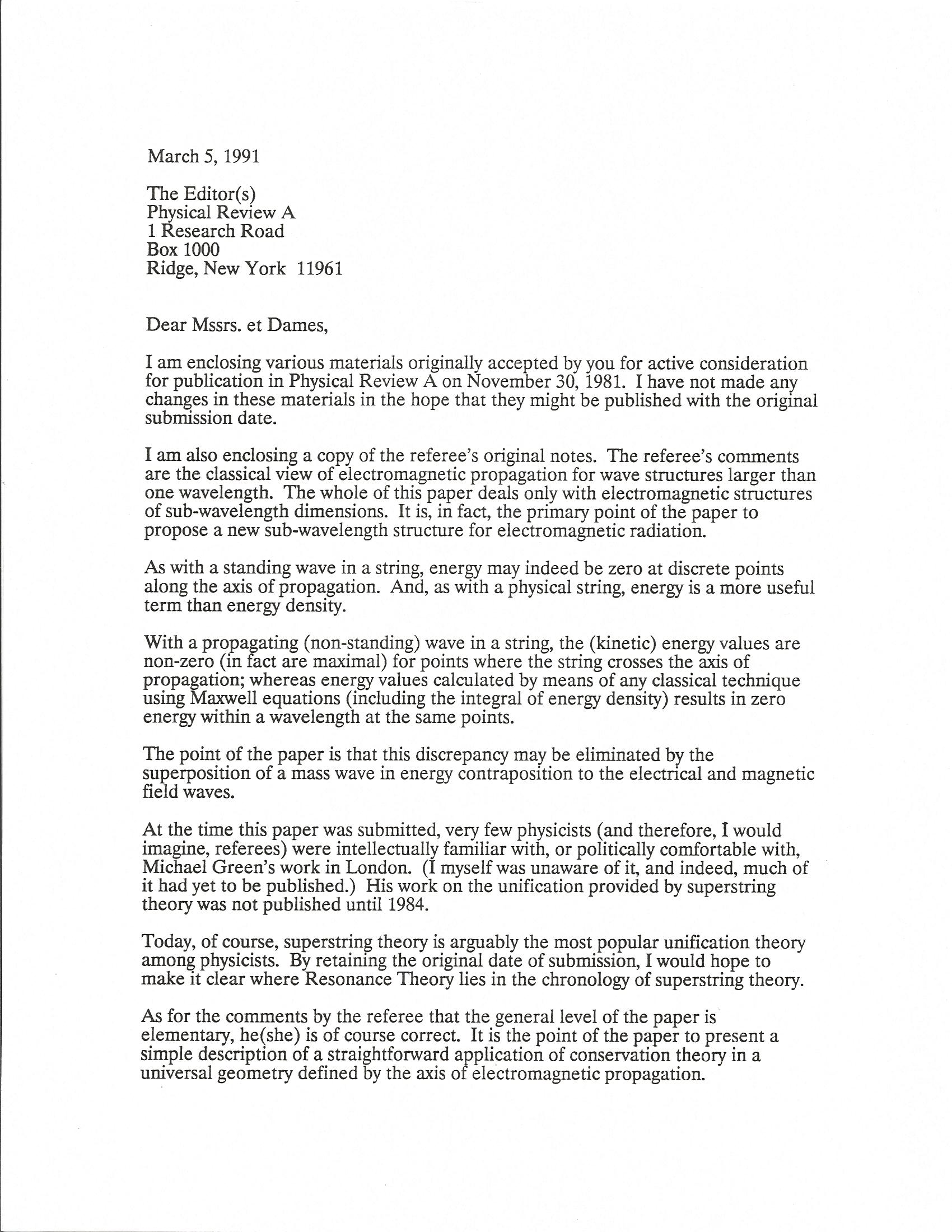 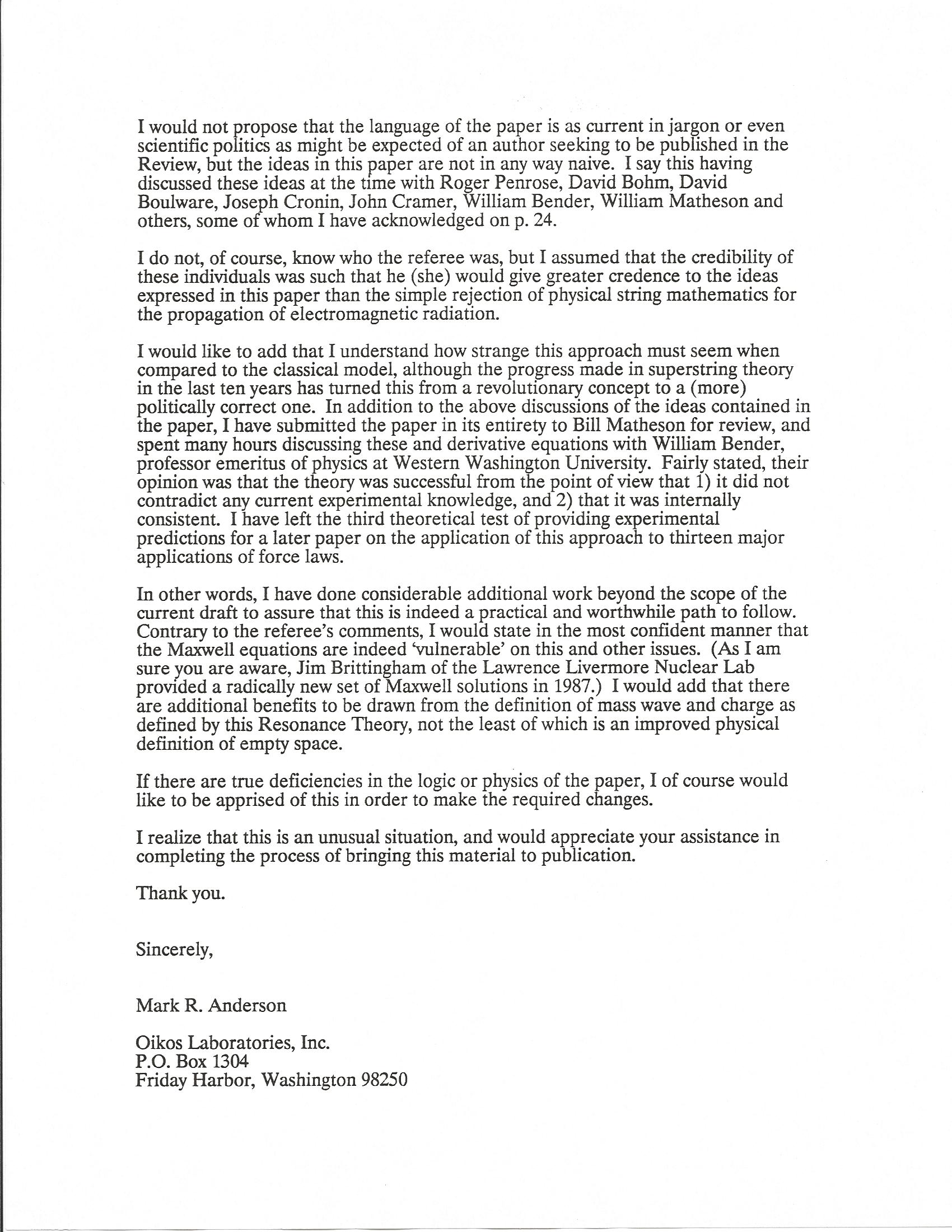 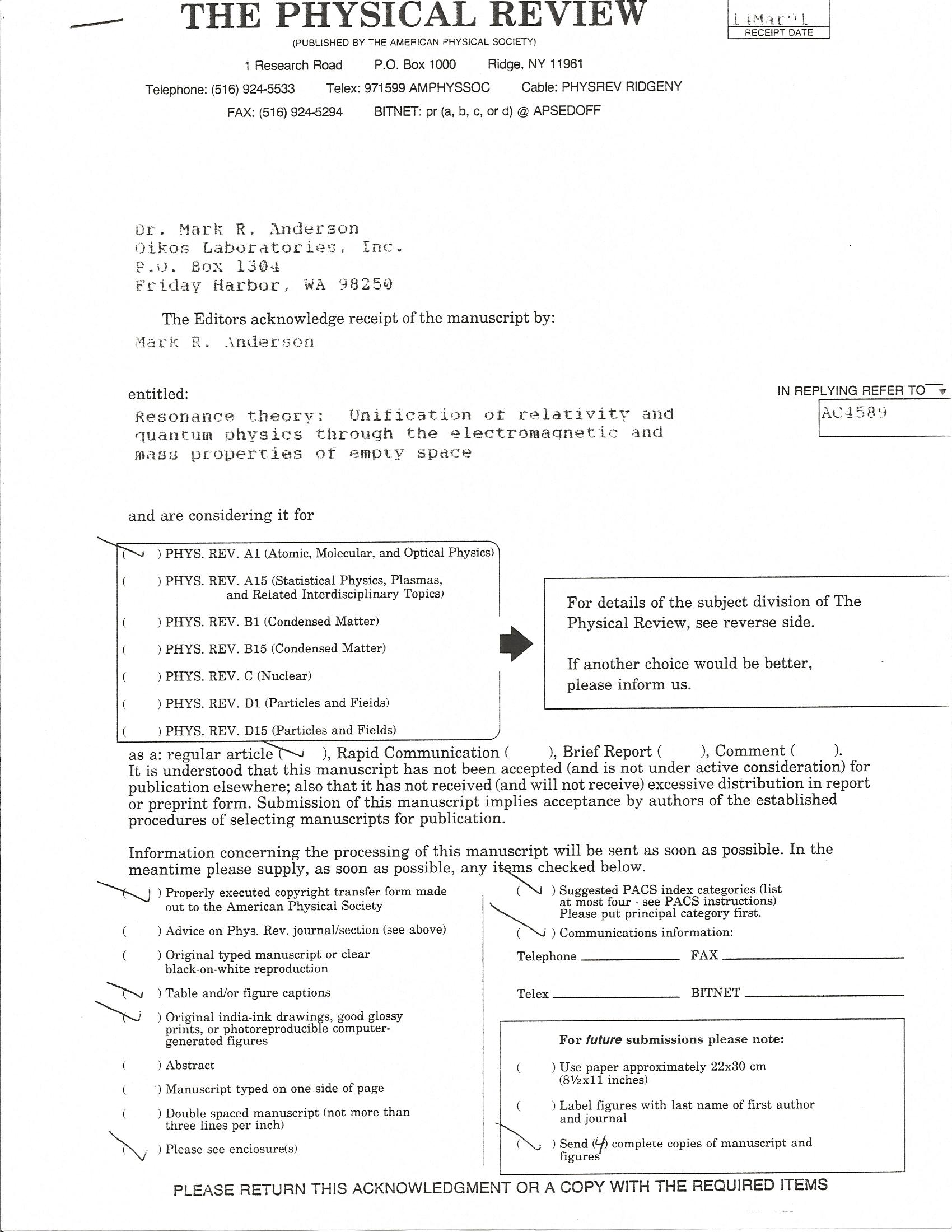 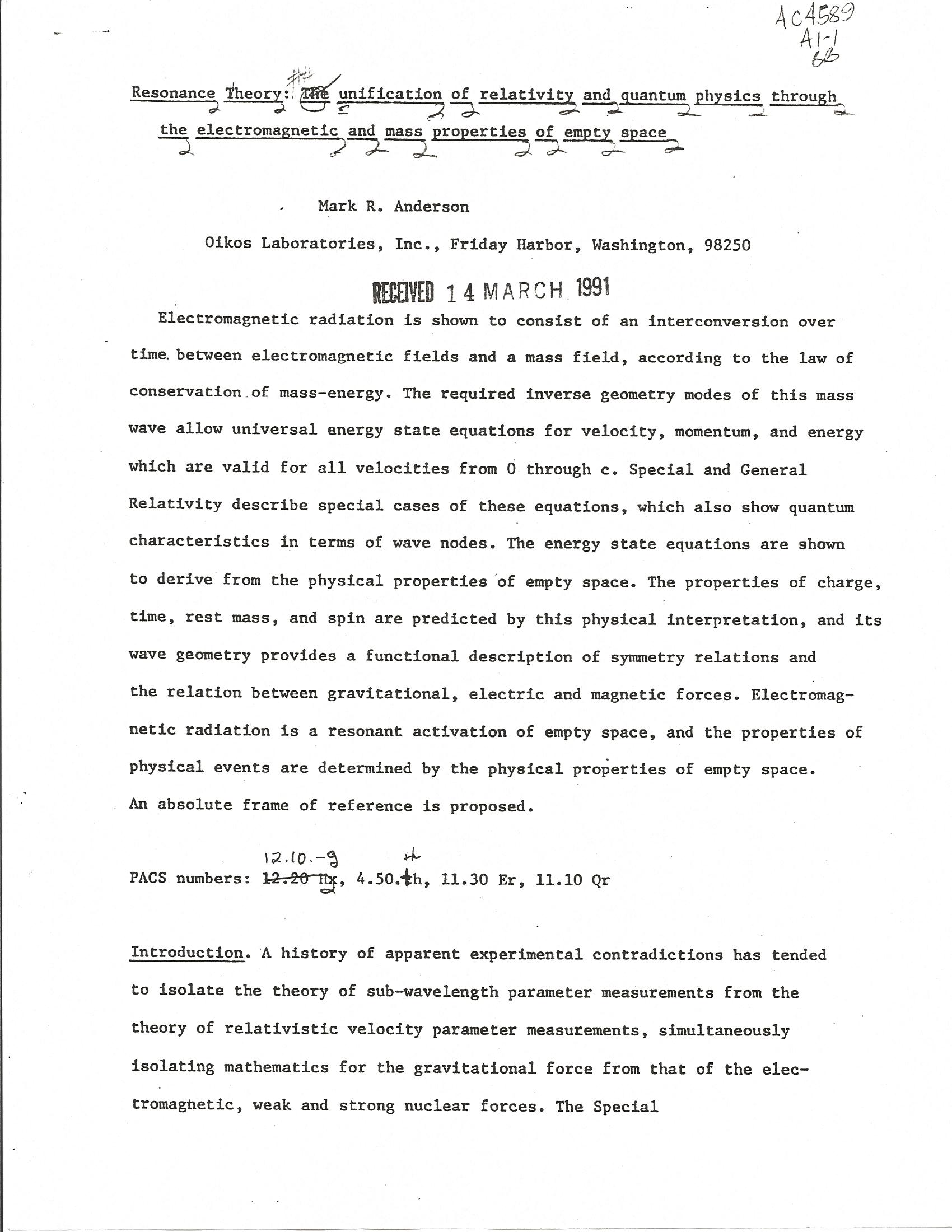 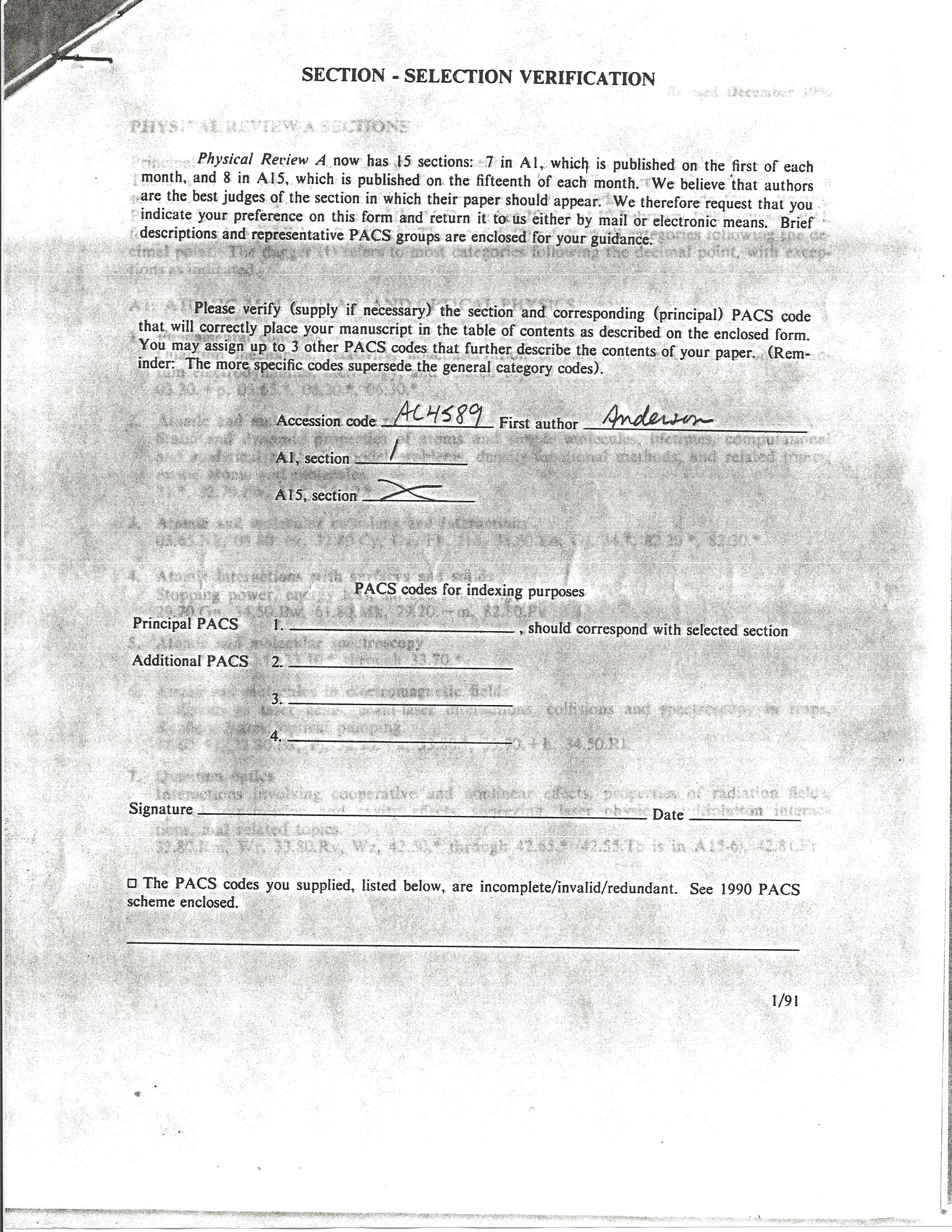 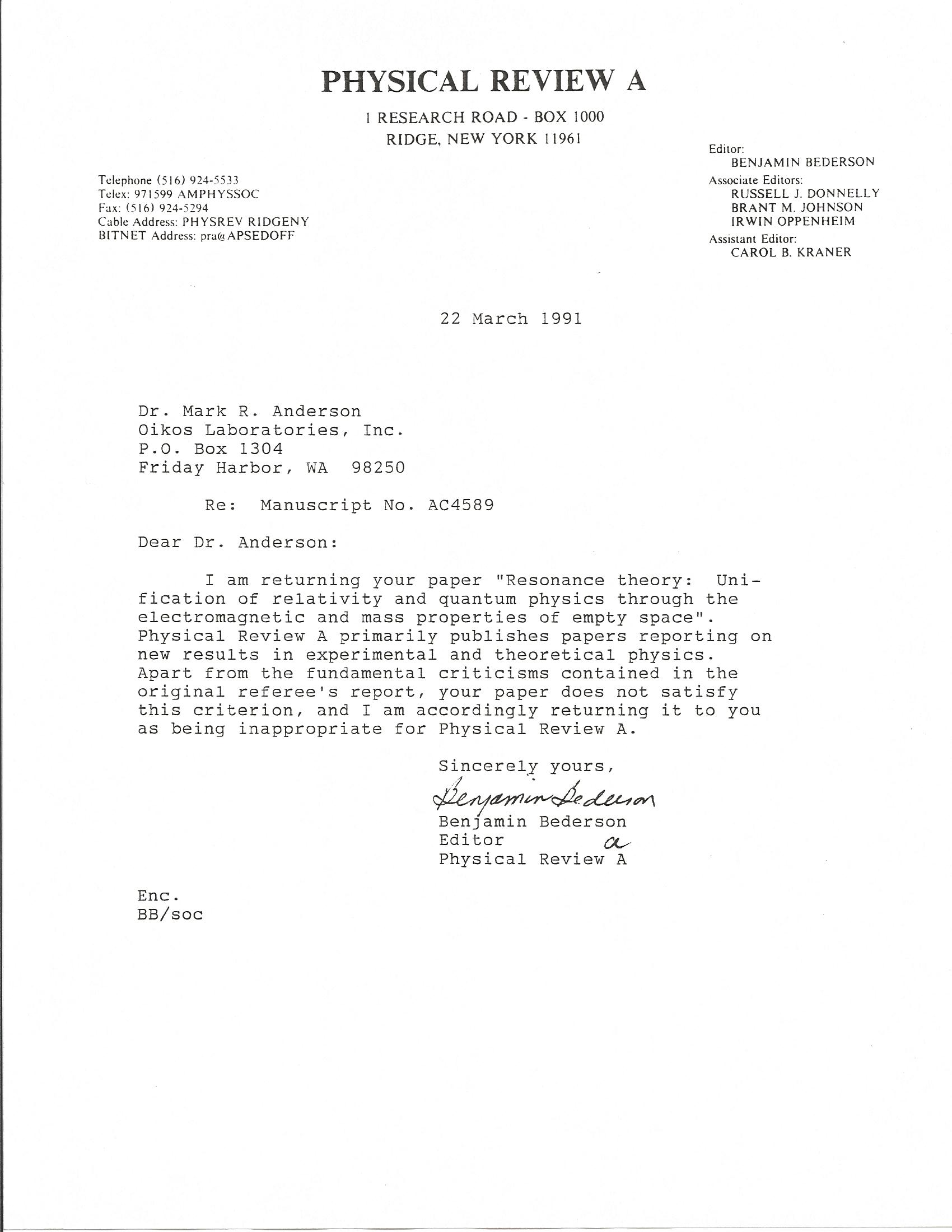 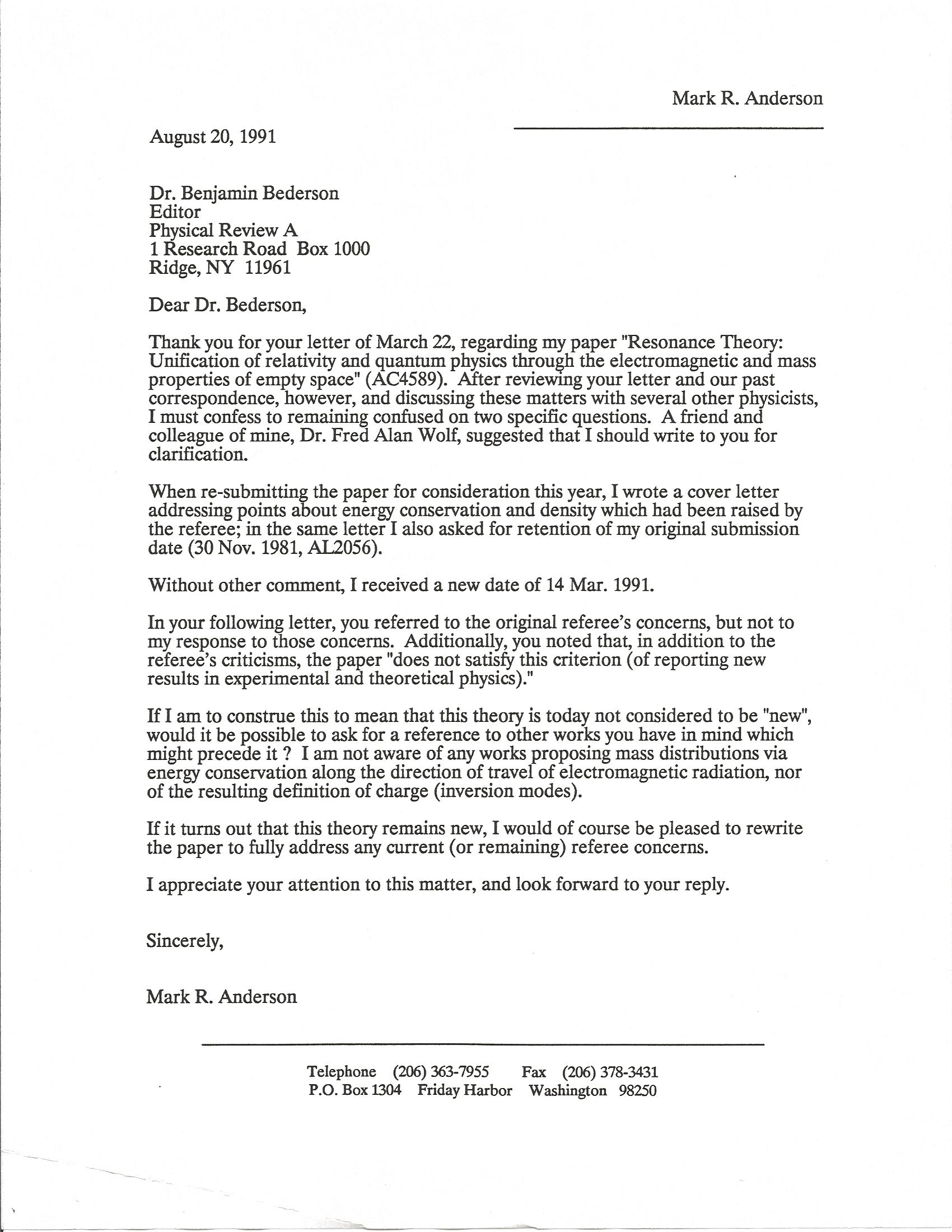 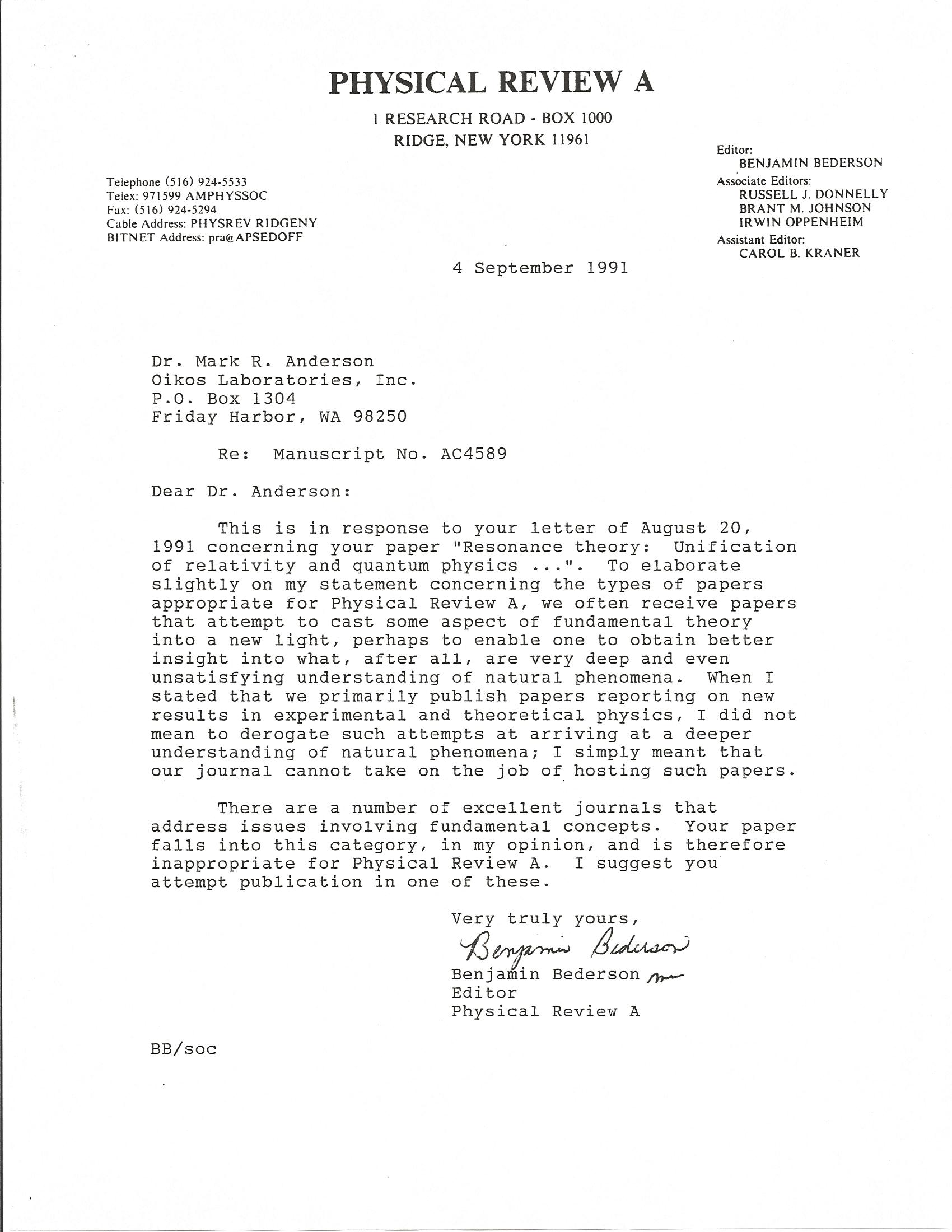 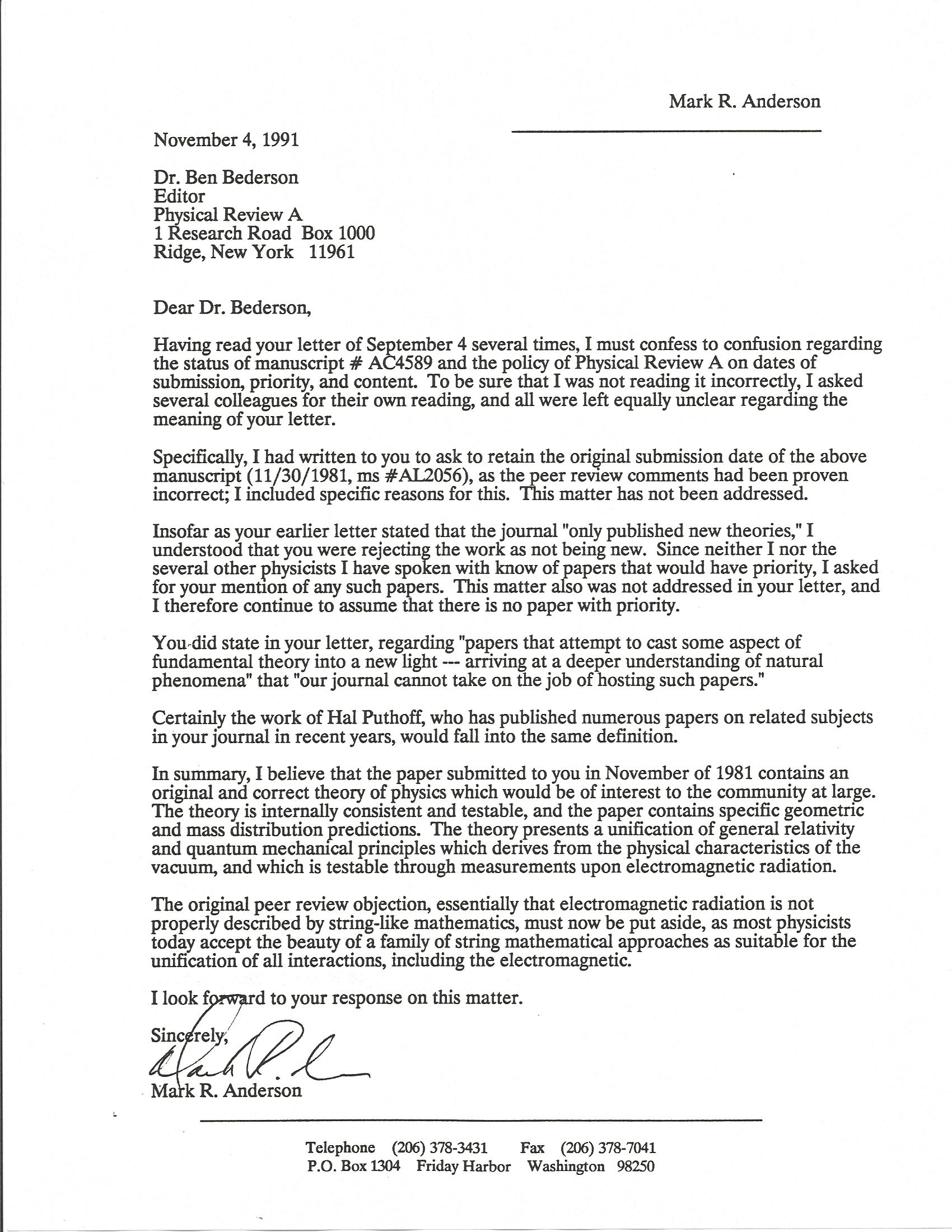 Addenda Addendum 1: Refuting the original referee comments on Resonance Theory.
The original peer review of this work complained that, by using total energy vs. energy density, a mistake had been made, thereby “vitiating” the rest of the work. Printed below is the formula for energy density in a vacuum. Given my selection of plane-polarized electromagnetic radiation, it is clear that the values of both E and B are simultaneously zero as the fields (strings, branes) move across the axis of propagation. Plugging these values into the equation, and contrary to the referee’s comments, we see that total energy density “U” (as well as total energy) are also zero at such crossings.
The referee was wrong, and the paper stands.
Energy density of electric and magnetic fields Electric and magnetic fields store energy. In a vacuum, the (volumetric) energy density (in SI units) is given by
where E is the electric field and B is the magnetic field. In the context of magnetohydrodynamics, the physics of conductive fluids, the magnetic energy density behaves like an additional pressure that adds to the gas pressure of a plasma.
Addendum 2: A Visit to Roger Penrose.
In the summer of 1980, I took it upon myself to visit a number of accomplished physicists and mathematicians whose work seemed germaine to the discoveries I had made in working out Resonance Theory. Among those was Roger Penrose, then working at Oxford, whose creations of Twistor and Spinor object mathematics struck me as capable of being the future mathematics of Resonance Theory.
At that time, there was no String Theory. Having shared these thoughts with Penrose in his office, I later mailed him several drafts of the paper on Resonance, but got no response. After seeing him at the University of Washington some years later, faxing to him again, and still getting no response, I gave up on having additional communications, other than an occasional email I sent along.
As String Theory emerged, my understanding is that Penrose took issue with it, a battle that lasted for decades. Last year, in a discussion with my friend John Cramer (now Emeritus Professor of nuclear physics at the University of Washington), I discovered that Penrose has met with Ed Whitten, the Keeper of the String Theory keys; and that a truce has broken out, over Penrose’s sudden discovery that his mathematics, and that of String Theory, are indeed compatible.
If this hearsay is correct, it’s exactly what I told him, in Oxford, in his office, in 1980 – before there was a String Theory. It would appear we now agree.
Addendum 3. Einstein’s Greatest Mistake.
In publishing various ideas from Resonance Theory in the pages of the Strategic News Service over the years, I identified the specific problem of Einstein’s decision to forego discussion of the ether, and wrote about it in an issue therefore entitled “Einstein’s Biggest Mistake.” The root of the mistake was clear: by ignoring the ether, Einstein also ended up ignoring charge, and that ended up in the current schism between Quantum Mechanics and General Relativity. (The work on Charge Inversion Modes in this paper attempts to resolve this problem.)
Years after this paper was written, as my friend Walter Isaacson was writing his well-known biography of Einstein, I shared these issues of SNS with him, and he was able to inform me that Einstein himself recognized this misstep as his greatest mistake, and referred to it in those terms in a talk at the University of Leiden in 1920.
|
Resonance Supportscott2023-08-08T16:04:03-07:00
Copyright © 2012 Mark R. Anderson
